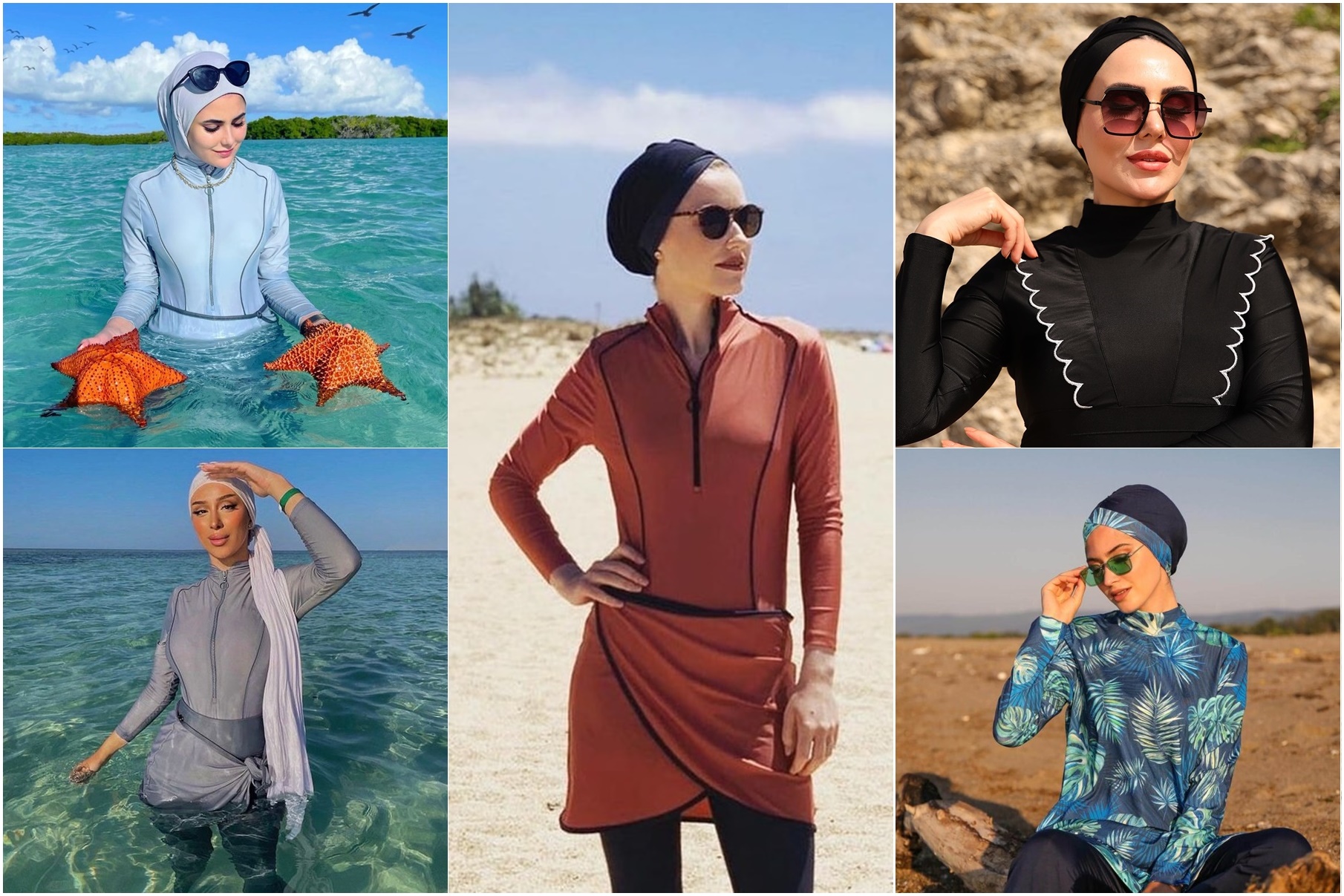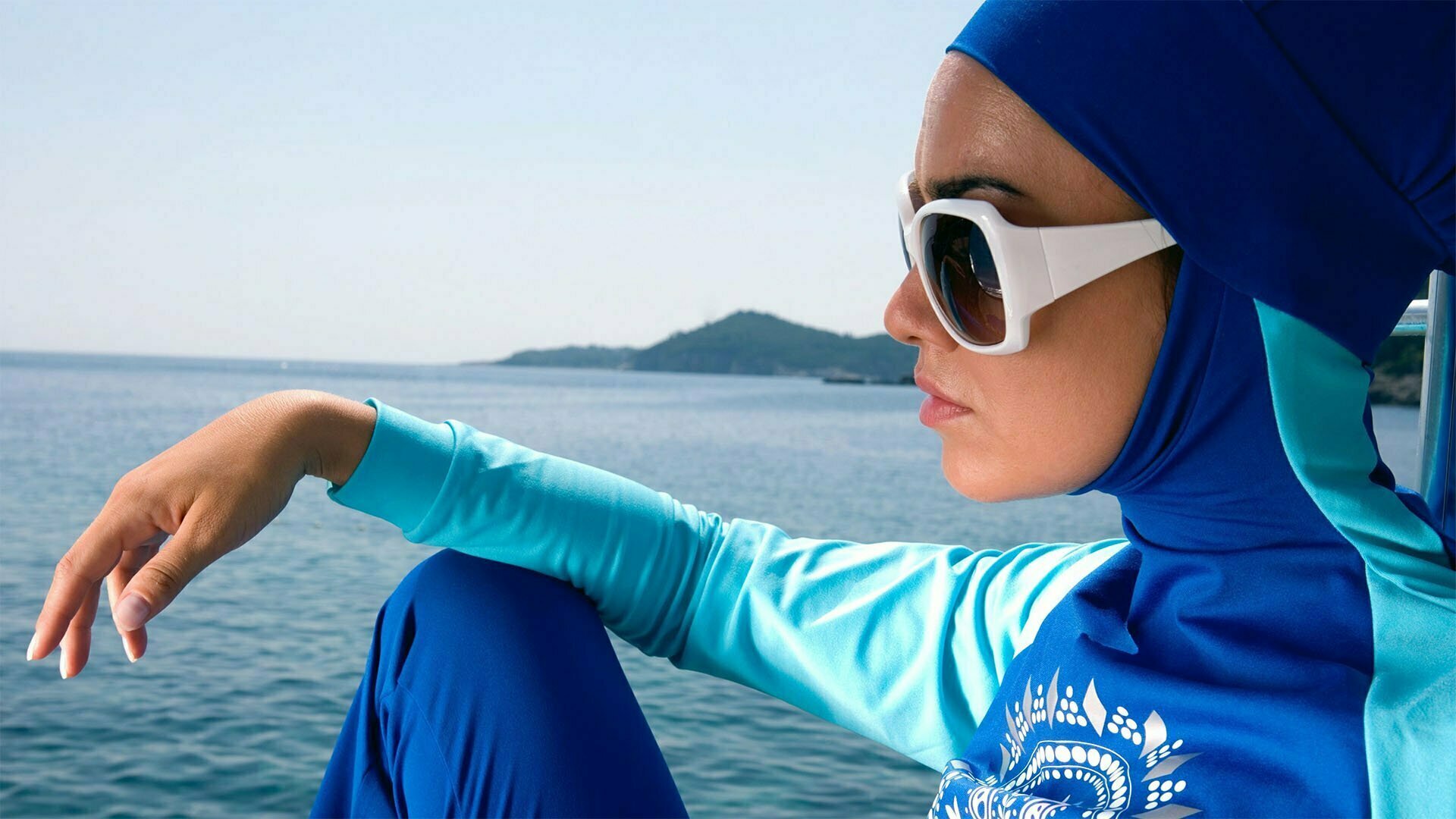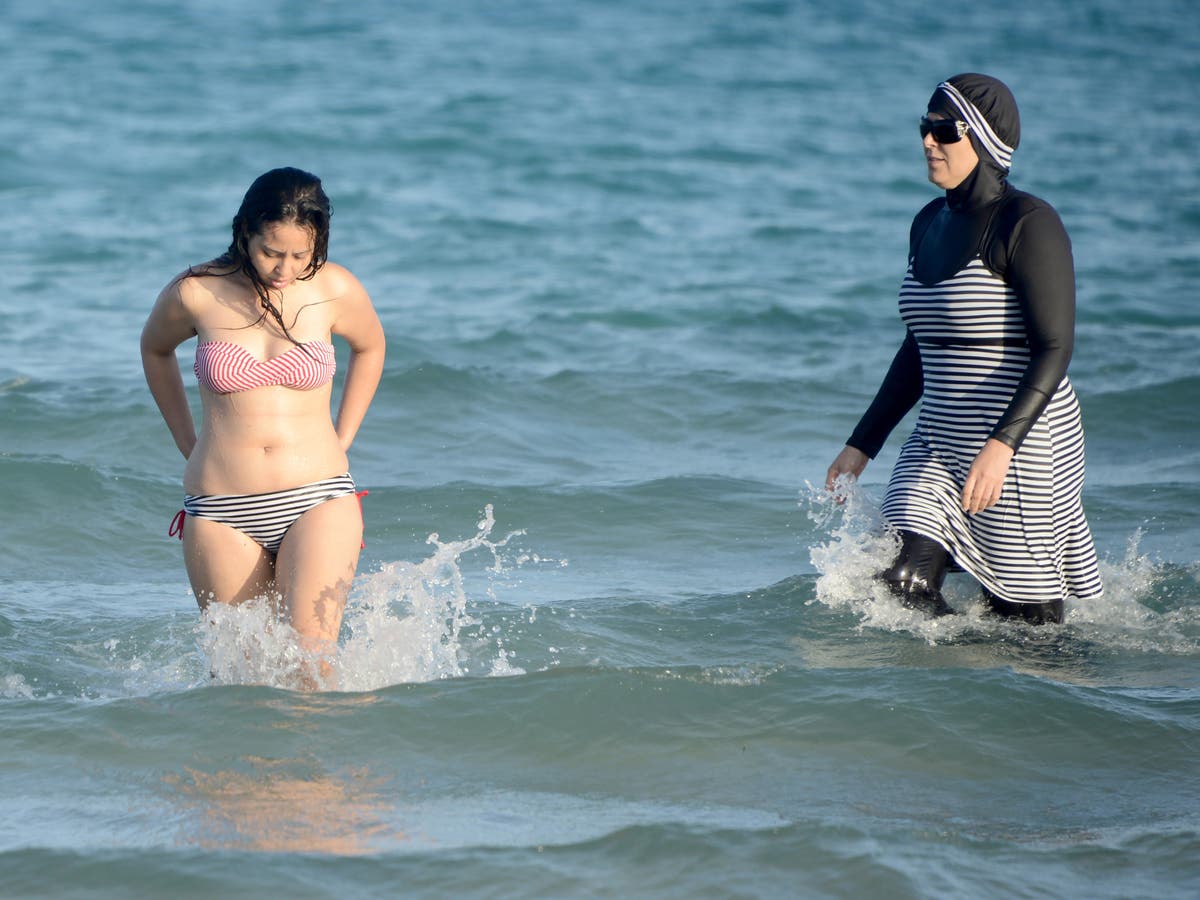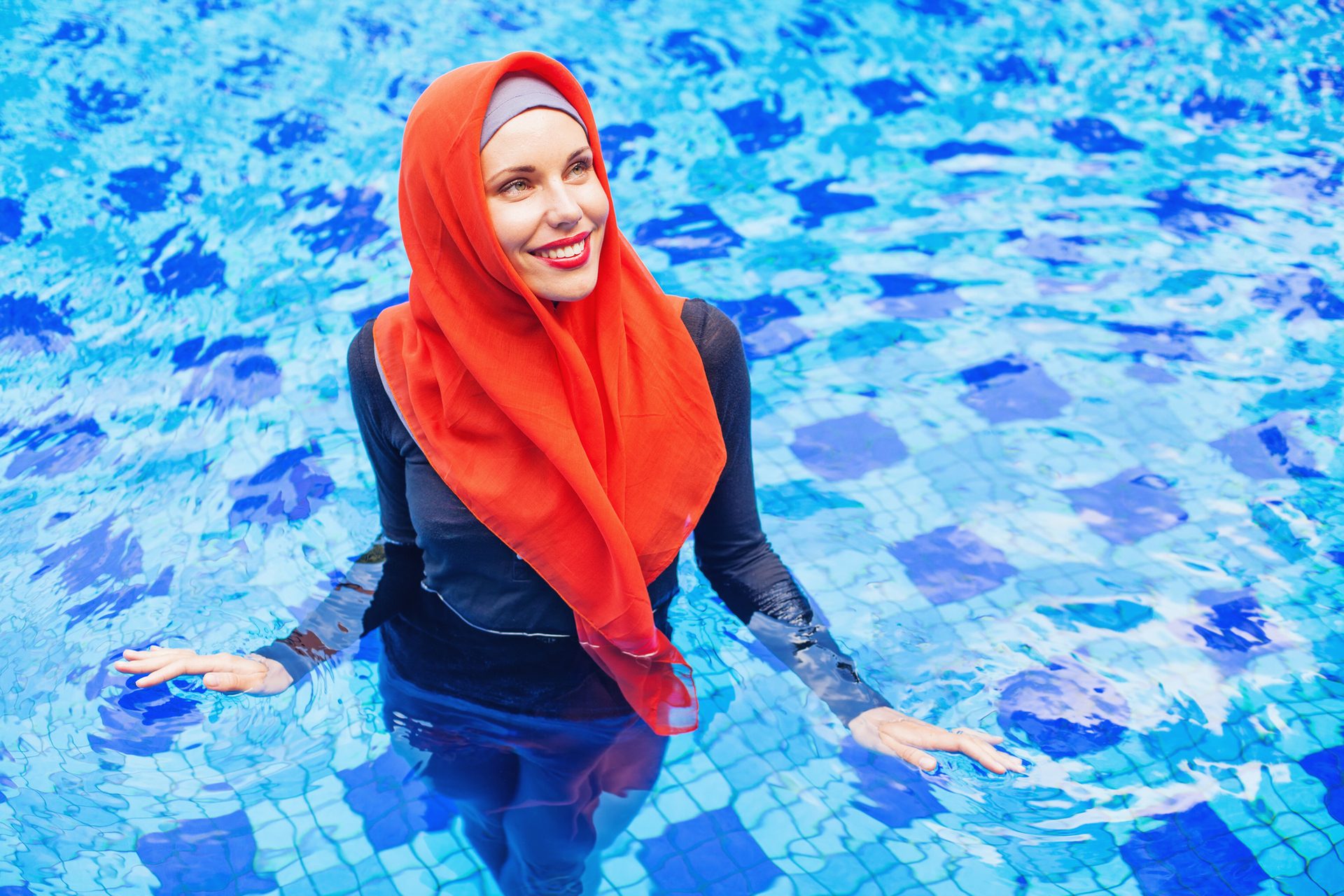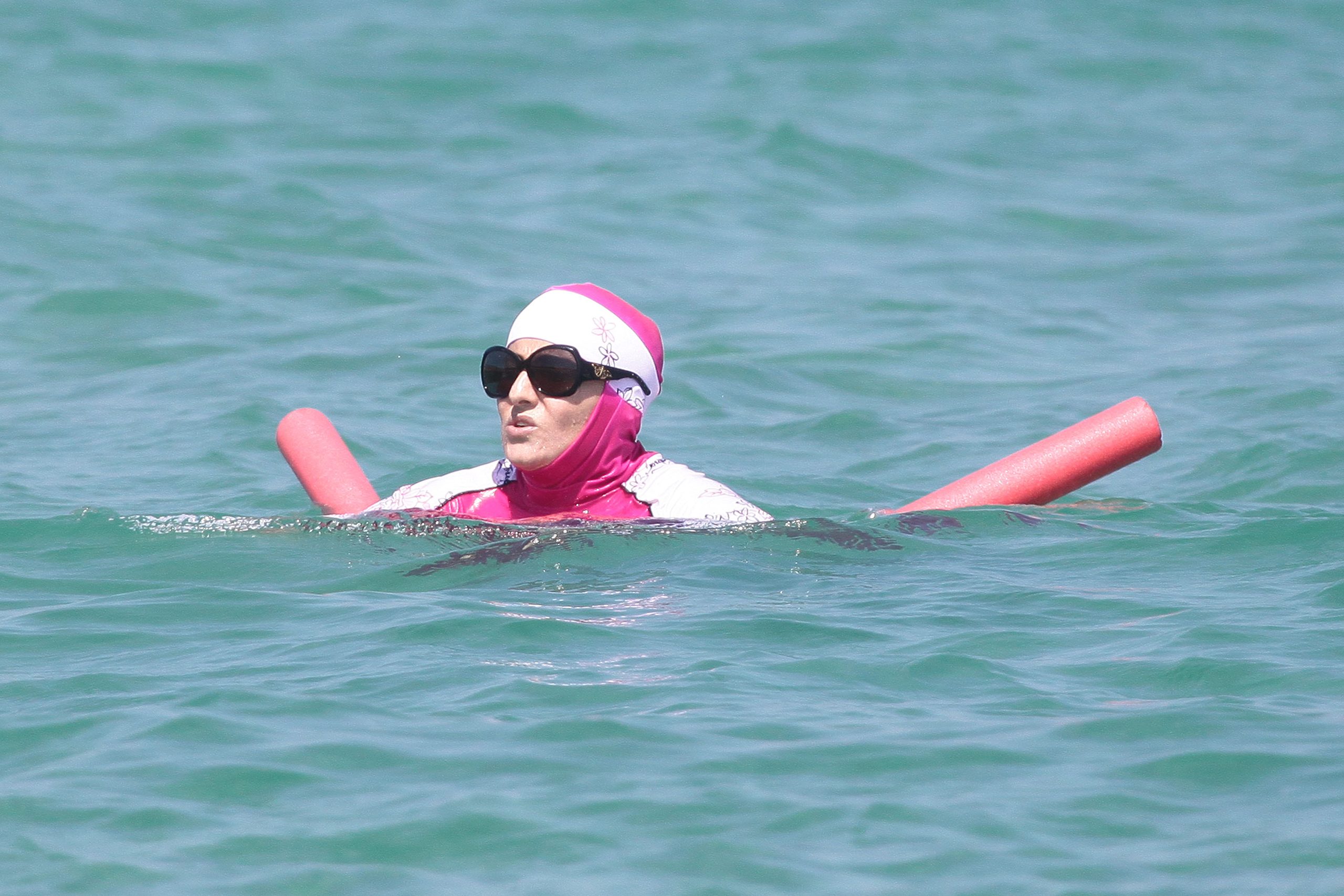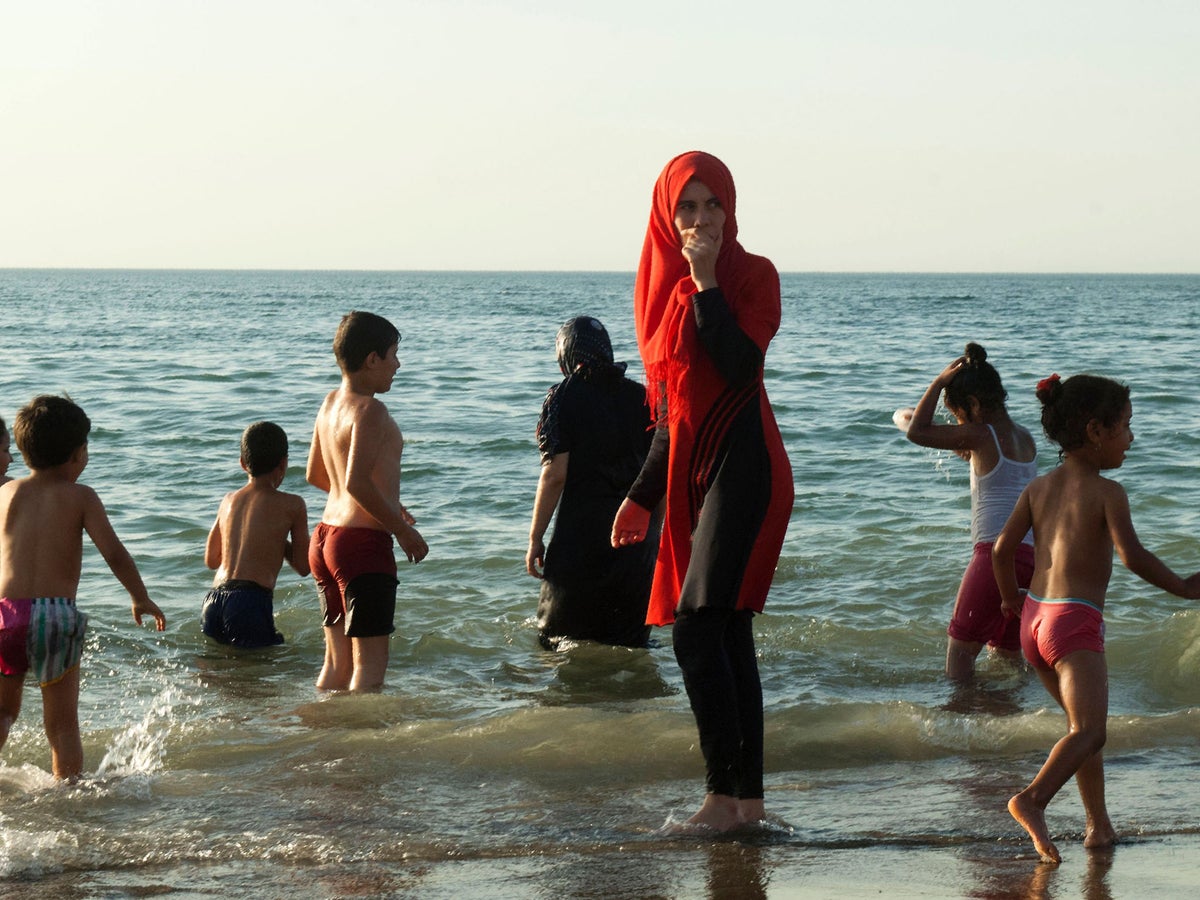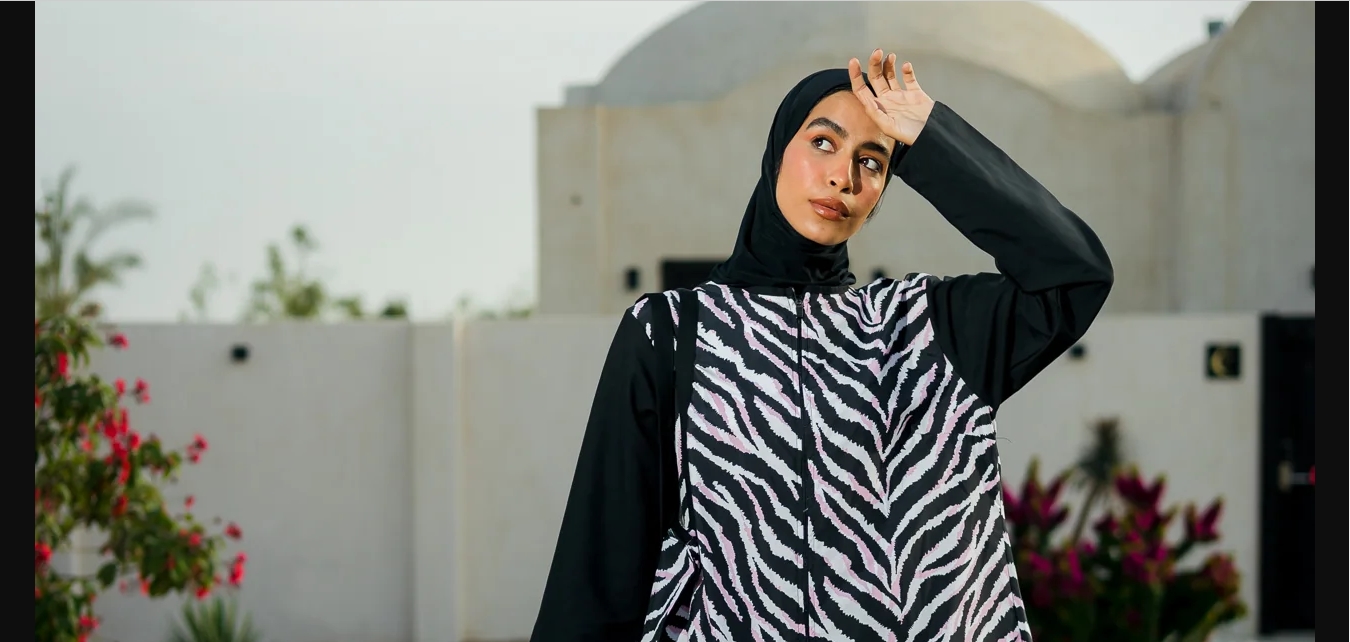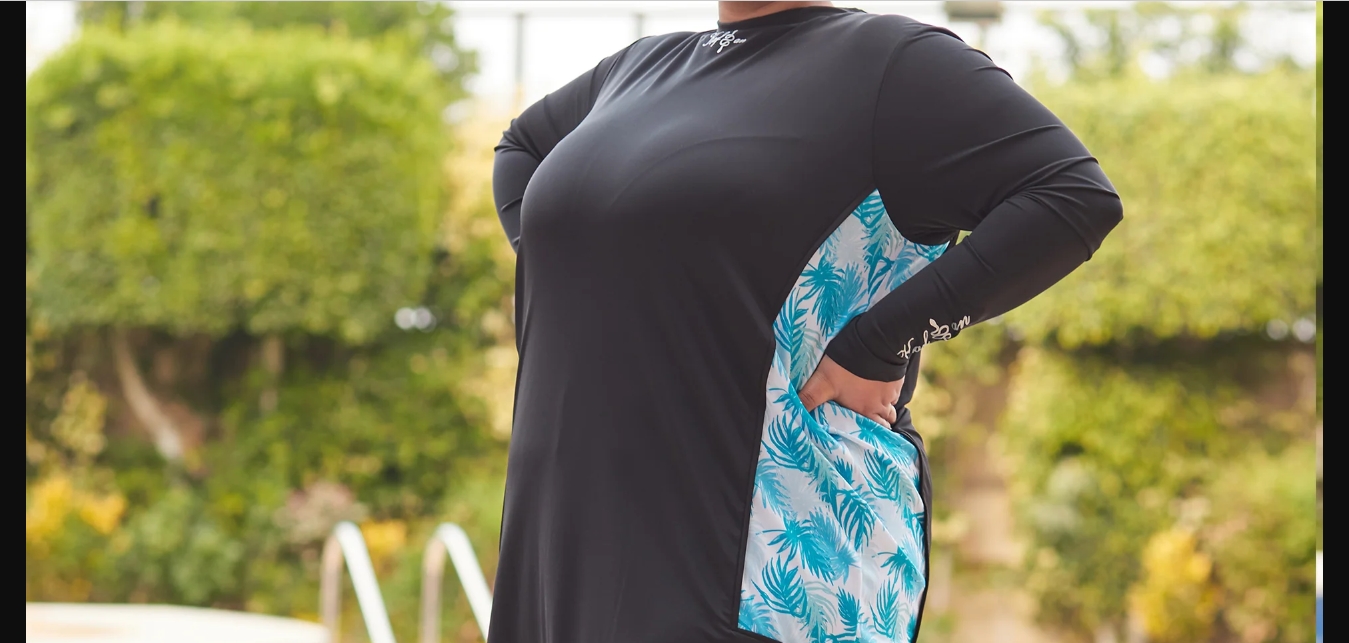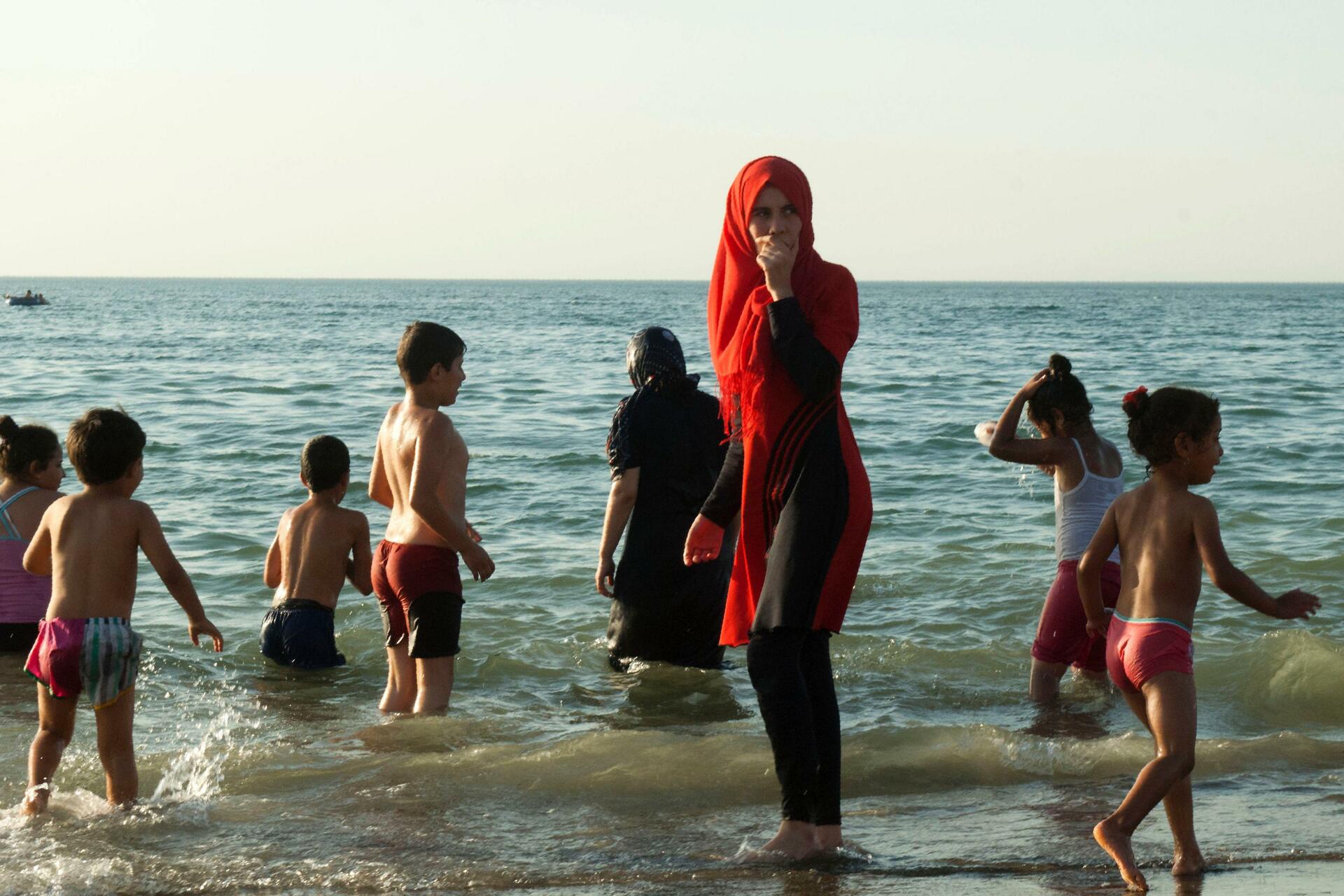Home>Women's Underwear>Swimwear>What Is Hijab & Burkini
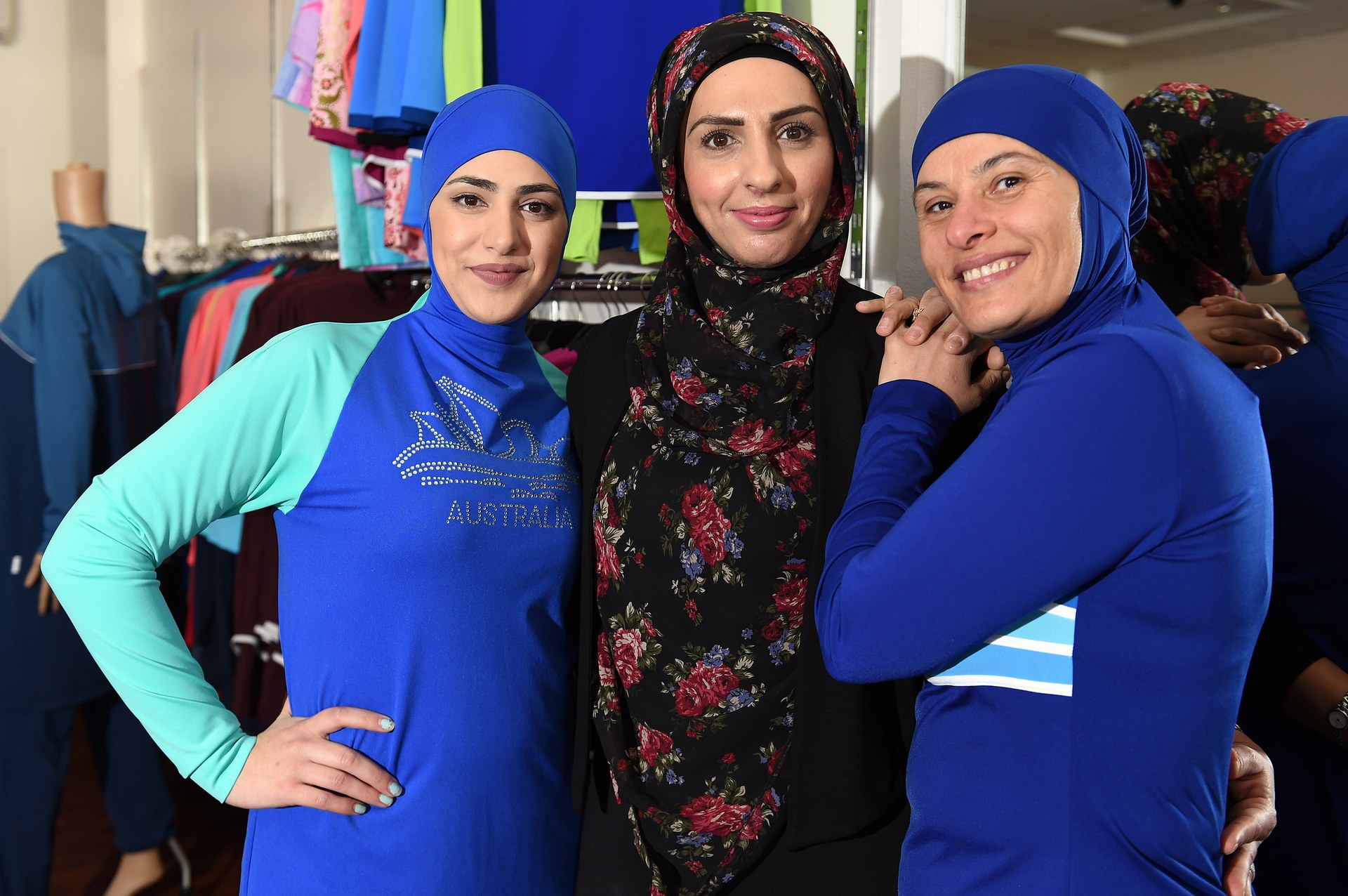

Swimwear
What Is Hijab & Burkini
Published: July 31, 2023
Discover the significance of hijab and explore the concept of the burkini swimwear. Find the perfect swimwear that combines modesty and style for your beach outings.
(Many of the links in this article redirect to a specific reviewed product. Your purchase of these products through affiliate links helps to generate commission for Under-tec.com, at no extra cost. Learn more)
Table of Contents
- Introduction
- Definition of Hijab
- Origin of Hijab
- Types of Hijab
- Purpose of Hijab
- Controversies and Misconceptions surrounding Hijab
- Definition of Burkini
- History of Burkini
- Burkini vs. Traditional Swimwear
- Controversies and Misconceptions surrounding Burkini
- Similarities and Differences between Hijab and Burkini
- Conclusion
Introduction
Swimwear has evolved significantly over the years, with various styles and designs available to suit different preferences and cultural beliefs. Two such types of swimwear that have gained attention and sparked heated debates are the hijab and burkini. While both are associated with modesty and religious beliefs, they serve different purposes and have distinct origins.
Hijab refers to a head covering worn by women in line with Islamic principles of modesty. It is an essential part of Muslim women’s attire, serving as a symbol of their religious and cultural identity. On the other hand, the burkini is a full-body swimsuit that allows Muslim women to participate in water-related activities while adhering to their modesty requirements.
In this article, we will explore the definitions, origins, controversies, and misconceptions surrounding both hijab and burkinis. We will also delve into the similarities and differences between these two types of swimwear.
Understanding the significance and motivations behind the choice to wear hijab or a burkini is crucial in promoting inclusivity and diversity. By gaining insight into these forms of swimwear, we can foster a more accepting and respectful society for all individuals.
Definition of Hijab
The word “hijab” originates from the Arabic language and translates to “cover” or “barrier.” In the context of Muslim women’s attire, hijab refers to a head covering and modest dress that aligns with Islamic principles of modesty and humility. It is an essential part of the overall Islamic dress code.
Hijab serves as a symbol of a Muslim woman’s devotion to her faith, as well as a reflection of her cultural and religious identity. It goes beyond a mere piece of cloth and encompasses a way of life, encompassing not only external appearance but also modesty in behavior, speech, and interactions.
The primary purpose of wearing hijab is to conceal the physical beauty of women and to maintain their dignity and privacy. It helps to shift the focus of interaction from outward appearances to inner qualities and intellect. By covering their hair and body, Muslim women believe they are protecting themselves from objectification and maintaining their honor and integrity.
There are different styles and interpretations of hijab, ranging from the more traditional styles like the niqab (full-face veil) and the abaya (loose-fitting robe) to more contemporary variations like the headscarf or shawl worn with loose-fitting clothing. However, the underlying principle remains the same – to promote modesty and adherence to Islamic values.
It is important to note that hijab is a personal choice made by Muslim women and should not be imposed or forced upon them. It is a form of self-expression and religious devotion that empowers women to embrace their religious and cultural identities while engaging with the wider society.
Origin of Hijab
The practice of wearing hijab can be traced back to ancient civilizations and predates the advent of Islam. While it is often associated with Muslim women, the concept of modesty and covering is found in various cultures and religions throughout history.
In pre-Islamic Arabia, women from different tribes used to wear veils and cover their hair as a sign of modesty and social status. The purpose was to distinguish respectable women from those who were considered of lower social standing. These practices were deeply rooted in cultural and societal norms rather than religious obligations.
With the emergence of Islam in the 7th century, the concept of hijab took on a new significance. The Quran, the holy book of Islam, contains verses that emphasize modesty and encourage women to cover their bodies and adornments, including their hair, in the presence of non-mahram (non-relative) men.
The exact form and style of hijab were not explicitly outlined in the Quran. Instead, the interpretation and implementation of hijab have evolved over time and vary across different cultures and regions. Muslim women have adapted the practice of covering to fit their social and environmental contexts while adhering to the underlying principles of modesty and respect.
The hijab has become a visible symbol of Islam, reflecting the values and beliefs of millions of Muslim women worldwide. It is important to recognize that the choice to wear hijab is deeply personal and can be influenced by a variety of factors such as religious devotion, cultural identity, personal beliefs, and community expectations.
It is worth noting that while some may perceive hijab as oppressive or restrictive, many Muslim women view it as a form of empowerment and a means to express their faith and identity in a society that often emphasizes external appearances. The practice of hijab continues to evolve, with new styles and interpretations emerging over time, reflecting the diverse experiences and preferences of Muslim women.
Types of Hijab
The hijab is a versatile and diverse form of Islamic attire, with various styles and types that cater to different preferences, cultures, and occasions. Here are a few common types of hijab:
- Hijab Scarf: The hijab scarf is the most common and widely known type of hijab. It involves wearing a scarf to cover the hair, neck, and sometimes the shoulders. It can be worn in different ways, such as the traditional “over-the-shoulder” style, the “wrap-around” style, or the “one-sided” style.
- Abaya: The abaya is a loose, full-length overgarment worn over regular clothing. It is commonly worn in the Arab Gulf countries, covering the whole body except for the face, hands, and feet. The abaya is often made of lightweight and breathable fabric, and it can come in various colors and designs.
- Niqab: The niqab is a face-covering veil that is worn in addition to the hijab scarf. It covers the entire face, leaving only the eyes visible. The niqab is more commonly worn in conservative interpretations of Islam and is often seen as a symbol of increased privacy and devotion.
- Shayla: The shayla is a rectangular piece of cloth worn as a hijab scarf, typically wrapped around the head and pinned at the shoulders. It is commonly worn by women in the Arabian Peninsula and provides a simple and elegant look.
- Khimar: The khimar is a cape-like garment that covers the chest, shoulders, and head, extending down to the waist or hips. It is often worn as an additional layer over regular clothing and can be styled in various ways.
These are just a few examples of the many types of hijab worn by Muslim women across different cultures. The choice of hijab style is often influenced by personal preference, cultural traditions, and religious interpretations. Some women may choose to experiment with different styles and fabrics, allowing for self-expression and creativity while adhering to the principles of modesty.
Purpose of Hijab
The hijab serves multiple purposes for women who choose to wear it, going beyond its physical appearance. Here are some key purposes of hijab:
- Modesty and Preservation of Dignity: One of the primary purposes of hijab is to promote modesty by covering the body and hair. It allows women to maintain their privacy and preserve their dignity by shifting the focus from outer appearances to inner qualities and character.
- Religious Devotion: Hijab is seen as an act of religious obedience and devotion for many Muslim women. By wearing hijab, they believe they are fulfilling a commandment from Allah (God) and demonstrating their faith and commitment to Islam.
- Protection and Empowerment: Hijab is often seen as a means of protection from objectification and unwanted attention. It allows women to control who has access to their beauty and personal space, empowering them to navigate public spaces with a sense of security and self-respect.
- Cultural and Identity Expression: Hijab also serves as a means of expressing one’s cultural and religious identity. It symbolizes a woman’s connection to her community and heritage and can foster a sense of belonging and pride in one’s cultural and religious roots.
- Elevation of Inner Qualities: By covering their physical attributes, hijab encourages others to focus on a person’s intellect, personality, and character rather than their outward appearance. It emphasizes the importance of inner qualities and encourages deeper connections and meaningful interactions.
It is important to note that the purpose and significance of hijab may vary among individuals depending on their personal beliefs, cultural backgrounds, and interpretations of Islamic teachings. Women who choose to wear hijab often have their own unique reasons and motivations, which can evolve over time.
By understanding the purpose of hijab, we can foster greater respect and appreciation for the choices made by Muslim women. It opens up opportunities for meaningful dialogue, intercultural understanding, and a more inclusive society where individuals are valued for their character and contributions rather than their external appearance.
Controversies and Misconceptions surrounding Hijab
Hijab has been a subject of controversy and the target of numerous misconceptions in various parts of the world. These misconceptions often stem from a lack of understanding and misinformation about the practice of hijab. Here are some of the common controversies and misconceptions surrounding hijab:
- Forced Oppression: One of the most prevalent misconceptions is that Muslim women are forced to wear hijab against their will. However, it is important to recognize that hijab is a personal choice made by individuals based on their own beliefs and convictions. While some women may face societal pressure, it is important to distinguish between personal choice and coercion.
- Lack of Freedom: Another misconception is that wearing hijab restricts women’s freedom. However, many Muslim women view hijab as a means of empowerment and self-expression, giving them the freedom to adhere to their religious beliefs and exercise agency over their own bodies.
- Limitation in Opportunities: Some argue that wearing hijab hinders women’s participation in various fields and limits their opportunities. However, numerous studies and real-life examples defy this misconception, highlighting the achievements and contributions of hijabi women in various domains, such as education, sports, arts, and professional careers.
- Symbol of Extremism: Hijab is occasionally associated with extremism and radicalism, perpetuating stereotypes that all women who wear hijab are inherently conservative or involved in extremist ideologies. This generalization ignores the diverse range of beliefs and practices among Muslim women who wear hijab.
- Implications of Subjugation: Another misconception is that hijab symbolizes the subjugation of women. However, for many Muslim women, hijab is a personal choice that allows them to express their faith, culture, and identity. It is a way to challenge societal beauty standards and assert control over their bodies.
It is crucial to address these controversies and misconceptions surrounding hijab by fostering dialogue, promoting understanding, and challenging stereotypes. By engaging in respectful conversations and learning from diverse experiences, we can break down barriers and create a more inclusive and tolerant society.
It is important to approach discussions about hijab and other religious practices with an open mind, recognizing the agency and autonomy of individuals in making personal decisions. By addressing misconceptions, we can promote empathy, respect, and appreciation for the diverse beliefs and choices of individuals around the world.
Definition of Burkini
The term “burkini” is a blend of the words “burqa” and “bikini,” highlighting its unique nature as a hybrid swimwear garment that combines modesty and fitness. The burkini is designed to provide full-body coverage while allowing Muslim women to participate in water-related activities comfortably.
The burkini typically consists of three main pieces: a head covering, a tunic-style top that extends to the thighs, and full-length pants. The head covering is often in the form of a hood or a cap, ensuring that the hair and neck remain covered. The tunic top is loose-fitting and provides coverage for the torso and arms, while the pants offer coverage for the legs.
The burkini is made from lightweight, quick-drying, and chlorine-resistant fabric, making it suitable for swimming and other water activities. The design of the burkini allows Muslim women to enjoy beach outings, pools, and water sports while adhering to their religious and cultural principles of modesty.
It is essential to recognize that the burkini is not limited to Muslim women but is also worn by women from various cultural and religious backgrounds who choose to prioritize modesty and coverage while engaging in water-related activities.
The burkini has gained popularity and acceptance in recent years, making it more accessible to women worldwide. It offers a practical and comfortable solution for women who want to combine their faith and enjoyment of sports or recreation without compromising their modesty.
The burkini allows women to feel confident and included in activities that were previously restricted due to the lack of suitable swimwear options. It promotes diversity, inclusivity, and respect for cultural and religious practices.
History of Burkini
The concept of the burkini can be traced back to the early 2000s, specifically to the efforts of Australian designer Aheda Zanetti. Zanetti recognized the need for swimwear that catered to the needs of Muslim women who wanted to maintain their modesty while engaging in water activities.
In 2004, Zanetti introduced the burkini to the world, revolutionizing the swimwear industry. The burkini gained significant attention and quickly became popular among Muslim women and others who sought modest swimwear options.
The debut of the burkini sparked both praise and controversy. Supporters hailed it as a symbol of empowerment, allowing women to participate in water sports and outdoor activities without compromising their religious and cultural beliefs. The burkini also garnered recognition for promoting body positivity and inclusivity, challenging societal beauty standards.
However, the burkini faced backlash from some sectors of society, with critics arguing that it hindered integration and suggested a lack of assimilation. Several instances occurred where women wearing burkinis faced discrimination, harassment, and even bans in public spaces such as beaches and pools.
Despite the controversies, the popularity of the burkini continued to grow, and it gained widespread acceptance in many countries. Today, numerous brands and designers offer a variety of burkini styles, catering to diverse tastes and preferences.
The history of the burkini reflects the changing attitudes and evolving understanding of religious and cultural practices. It has become a symbol of inclusivity and a recognition of the diverse needs and choices of women worldwide.
The acceptance and availability of the burkini have had a positive impact on many women’s lives, providing them with the freedom to engage in activities that were previously inaccessible. The burkini serves as a testament to the importance of embracing and celebrating diversity in the world of fashion and beyond.
Burkini vs. Traditional Swimwear
The burkini and traditional swimwear represent two contrasting approaches to dressing for water-related activities. Here are some key differences between the two:
- Modesty: The primary distinction between the burkini and traditional swimwear lies in the level of coverage. Traditional swimwear typically exposes a significant portion of the body, including the arms, legs, and torso. In contrast, the burkini provides full-body coverage, including the hair, neck, arms, and legs.
- Religious and Cultural Considerations: The burkini is an alternative for Muslim women who wish to maintain their modesty and adhere to their religious requirements while participating in water activities. Traditional swimwear, on the other hand, reflects mainstream fashion trends and societal norms, which may not align with specific cultural or religious beliefs.
- Comfort and Flexibility: The burkini is designed to provide comfort and flexibility for women during water activities. The loose-fitting and lightweight fabric allows for ease of movement, while the modest coverage provides a sense of security and confidence. Traditional swimwear may prioritize style and aesthetics over functionality, potentially leading to discomfort or self-consciousness for some individuals.
- Body Image and Inclusivity: The burkini promotes body positivity and inclusivity by offering a swimwear option that caters to a wider range of body types and cultural backgrounds. It challenges the notion of an idealized beach body and embraces the diversity of women’s bodies. Traditional swimwear, while popular and widely accepted, can sometimes perpetuate unrealistic beauty standards.
- Societal Perceptions: The choice to wear a burkini can sometimes be met with controversy and misconceptions due to cultural and religious biases. Traditional swimwear, being the norm in many societies, faces fewer stigmas and is generally more accepted.
Both the burkini and traditional swimwear have their respective places in the realm of swimwear fashion. The burkini offers a practical and comfortable option for those seeking modesty, religious adherence, and cultural expression, while traditional swimwear allows for different designs, styles, and exposure of the body.
Understanding and respecting the choices of individuals when it comes to swimwear is crucial for creating an inclusive and diverse society where everyone feels comfortable and accepted regardless of their clothing preferences. It is important to celebrate and embrace the diversity of options available and promote body positivity for all individuals.
Controversies and Misconceptions surrounding Burkini
The burkini, as a symbol of modest swimwear, has faced its fair share of controversies and misconceptions. These misunderstandings often stem from a lack of awareness and cultural sensitivity. Here are some common controversies and misconceptions surrounding the burkini:
- Assimilation and Integration: One of the prevalent misconceptions surrounding the burkini is that it hinders assimilation or integration into society. Critics argue that individuals wearing burkinis are unwilling to conform to societal norms. However, it is important to recognize that wearing a burkini is a personal choice that stems from religious, cultural, or personal preferences and does not impede one’s ability to integrate into society.
- Security and Safety Concerns: Some controversies have arisen around the perception of the burkini as a potential security risk or hindrance to safety. However, there is no evidence to support such claims. The burkini, like any other swimwear, undergoes screening processes and adheres to safety regulations in public spaces.
- Oppression and Lack of Agency: Another misconception is that women wearing burkinis are oppressed or lack agency in their choices. It is important to understand that many women choose to wear the burkini as a personal expression of their faith, cultural identity, or modesty preferences. Women who wear burkinis exercise agency and make informed decisions about their swimwear based on their own beliefs and values.
- Encouraging Separation: Some critics argue that the burkini promotes separation and segregation rather than fostering inclusivity and integration. However, this view disregards the fact that the burkini allows women who follow specific religious and cultural practices to actively engage in water-related activities and enjoy public spaces while respecting their own values and beliefs.
- Physical Activity and Performance: There is a misconception that burkinis inhibit physical activity or performance in water sports. However, burkinis are specifically designed to be lightweight, quick-drying, and flexible, enabling women to engage in a wide range of water activities comfortably.
Addressing these controversies and misconceptions requires open-mindedness, cultural understanding, and respectful dialogue. It is essential to recognize and respect the diversity of choices and beliefs among individuals. By promoting inclusivity and embracing different forms of swimwear, we can cultivate a more tolerant and accepting society for all.
Similarities and Differences between Hijab and Burkini
While hijab and burkini are both forms of attire associated with modesty and adherence to religious or cultural beliefs, there are notable similarities and differences between the two:
Similarities:
- Modesty: Both hijab and burkini aim to provide coverage and promote modesty. They offer alternatives for individuals who prioritize modesty in their clothing choices.
- Religious and Cultural Significance: Both attire options hold religious or cultural significance. Hijab is deeply rooted in Islamic teachings and reflects a Muslim woman’s religious identity. Burkini, while not exclusive to Islam, is often worn by Muslim women who wish to maintain their modesty while engaging in water activities.
- Challenging Beauty Standards: Both hijab and burkini challenge societal beauty standards that often emphasize the exposure of the body, promoting the idea that one’s worth is not solely based on physical appearance.
- Inclusivity and Representation: Both hijab and burkini contribute to promoting inclusivity and representation in the fashion industry. They offer options for women from diverse backgrounds to express their faith, cultural identity, and personal preferences in their clothing choices.
Differences:
- Usage and Context: Hijab is worn as daily attire and is not limited to specific activities. It is a form of dressing that encompasses modesty in all aspects of life. In contrast, the burkini is specific to water-related activities and provides coverage tailored for swimming or engaging in sports in a modest manner.
- Coverage: Hijab primarily covers the hair and neck while allowing various styles and interpretations depending on personal preference. Burkini, on the other hand, offers full-body coverage, including the head, arms, legs, and torso.
- Practicality: Hijab is generally made of lightweight fabric and is designed for comfort in daily life. Burkini, being swimwear, is made from materials that are suitable for water activities, such as quick-drying and chlorine-resistant fabrics.
- Acceptance and Controversy: While both hijab and burkini have faced controversy and misconceptions, the level of acceptance and awareness surrounding hijab is generally higher due to its longer history and wider recognition. Burkini, as a relatively newer form of modest swimwear, has faced more scrutiny and misunderstanding in some contexts.
Despite their differences, both hijab and burkini serve as means of expression, empowerment, and devotion to faith or cultural identity. They contribute to the diverse choices individuals have in expressing their modesty while navigating various aspects of life, including water activities and daily interactions.
Conclusion
The hijab and burkini are two forms of attire that have sparked discussions, controversies, and misconceptions in our society. Understanding the definitions, origins, purposes, and controversies surrounding these modest options is crucial in fostering inclusivity, respect, and acceptance for individuals with different cultural and religious backgrounds.
Hijab is a symbol of modesty and religious devotion for Muslim women, while the burkini serves as a practical solution for those who want to maintain their modesty while participating in water activities. Both offer options for individuals to express their faith, cultural identity, and personal preferences while navigating different aspects of life.
It is important to debunk misconceptions and address the controversies surrounding hijab and burkini with empathy and cultural understanding. Recognizing the agency, autonomy, and personal choices of individuals who wear hijab or burkini is essential in creating an inclusive society where diversity is embraced and respected.
Promoting open-minded dialogue, respecting different perspectives, and challenging stereotypes are vital in breaking down barriers and fostering a more tolerant and accepting society. By commemorating the similarities and understanding the differences between hijab and burkini, we can work towards building a society that values the freedom of personal expression, diversity, and mutual respect.
